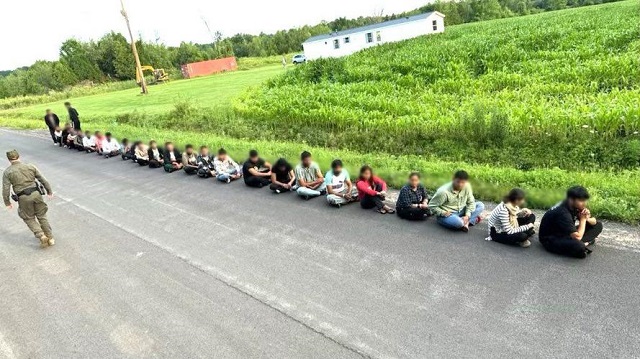Brownstone Institute
Canada’s “Worst Decline in 40 Years”
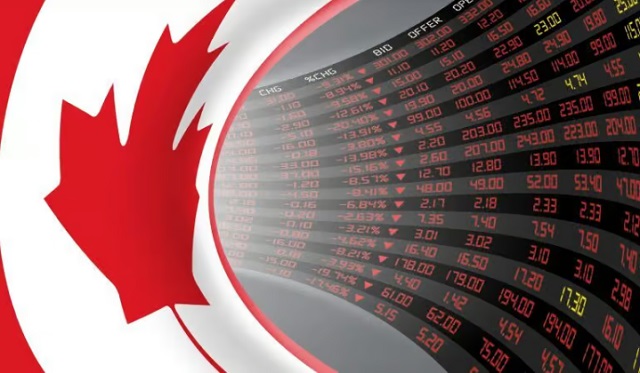
From the Brownstone Institute
Unlike the previous recessions, Canada is not recovering this time. Something broke.
Canada’s standard of living is on track for its worst decline in 40 years, according to a new study by Canada’s Fraser Institute.
The study compared the three worst periods of decline in Canada in the last 40 years – the 1989 recession, the 2008 global financial crisis, and this post-pandemic era.
They found that, unlike the previous recessions, Canada is not recovering this time. Something broke.
In fact, according to the Financial Post, since 2019 Canada’s had the worst growth out of 50 developed economies. Inflation-adjusted Canadian wages have been flat since 2016.

So, yes, something broke.
And it’s nowhere near over: Canada’s per-person real GDP is still falling and with a looming US recession – the US is 75% of Canada’s exports – Canada could crash again before it ever recovered.
Trudeau’s Canada in Decline
In previous videos, I’ve talked about the disaster that is Justin Trudeau’s Canada. In short, incomes are West Virginia-level, house prices are at the Los Angeles level, and Canadian taxes are halfway to the Soviet Union.
It’s not rare for a middle-class family in Canada to pay half their income in taxes.
Meanwhile, since the pandemic, Canada’s official food inflation is up 25%, and energy is up 30% – partly thanks to a carbon tax.
And keep in mind sales tax in most Canadian provinces is 13 to 15 percent on everything you buy.

While Canadians post TikToks about trying to stretch a loaf of rye bread through the week or selling off their possessions to afford groceries, the cost of living is hitting harder with time.
Canadian bankruptcy filings jumped 40% last year, while CIBC reports nearly half of Canadians have zero emergency savings.
According to StatsCan Canada’s violent crime rate is up 40% since 2014.
An Ipsos poll found 7 in 10 Canadians agree that “Canada is broken” – rising to 8 in 10 of those between age 18 and 34.
Angus found fully 42% of Canadians are considering moving to another country.

What Changed
This is all a shock because it happened so fast – it’s night and day from the last crisis in 2008, which Canada weathered much better than America.
What changed? Justin Trudeau. Specifically, his campaign to convert Canada from a mixed economy like the US into a government-dominated economy like the sick men of the European Union.

Under Trudeau, business investment has plunged by a third. While government spending nearly doubled to almost half of GDP.
Government workers in Canada are growing almost four times faster than the private sector, and one in three Canadians now work for the government, raking in 30% more in salary and benefits than the taxpayers they lord over. Another 1.7 million Canadians – roughly 1 in 10 households – are on welfare.
Of course, that makes it very difficult to win an election in Canada on a small-government platform: You’re up against the government-provided livelihoods of 40% of voters. Meaning you’ve got to win, what, 80% of everybody else.

What’s Next
Near-term things will get worse because Canadians are stuck with Trudeau through the next election in 2025.
Conservative Pierre Poilievre is ahead in the polls for now, but Canada’s government-funded media is doing everything they can to destroy him so the lead’s already narrowing.
That means more inflation, more decline, more mass migration, and rising crime in what was once a paradise.
Republished from the author’s Substack
Brownstone Institute
The Curious Case of Mark Zuckerberg

From the Brownstone Institute
By
On August 27, Meta CEO Mark Zuckerberg issued a statement confirming what the Twitter Files, Murthy vs. Missouri, and many others had long claimed – that the Biden administration aggressively pushed to censor First Amendment-protected speech on social media, in particular relating to Covid-19 and the Hunter Biden laptop.
In the case of Covid, Zuckerberg writes that the Biden White House “repeatedly pressured our teams for months to censor certain Covid-19 content, including “humor and satire.”
Zuckerberg also notes that the “FBI warned us about a potential Russian disinformation operation about the Biden family and Burisma,” a Ukrainian energy company that Hunter Biden sat on the board of. The laptop was not “disinformation”, it was real and Twitter and Facebook wrongly suppressed the New York Post story that exposed it.
But Zuckerberg’s statement missed a key detail – at least three Facebook staff members participated in the Aspen Institute’s Hunter Biden table-top exercise that game-planned how to suppress the story two months in advance of the New York Post story.
The Aspen Institute “table-top” brought together a host of media and Big Tech including Facebook, the New York Times, Twitter, the Washington Post, and “anti-disinformation” NGO First Draft, to create their very own disinformation operation, literally planning day-by-day how they would respond to the leak.


Zuckerberg, however, writes, “That fall, when we saw a New York Post story reporting on corruption allegations involving then-Democratic presidential nominee Joe Biden’s family, we sent that story to fact-checkers for review and temporarily demoted it while waiting for a reply.”
You can almost see the fall maple leaves feathering their way innocently to the forest floor.
“It’s since been made clear that the reporting was not Russian disinformation, and in retrospect, we should not have demoted the story.”
But there was no surprise, as Facebook had participated in the Aspen exercise two months before the story broke.
Even for Aspen’s Garret Graff, who coordinated the exercise, things went even better than planned:

Regarding Covid-19, Zuckerberg says the government “repeatedly pressured” Facebook to “censor.” Regarding the Hunter Biden laptop, he only mentions they were “warned” “about a potential Russian disinformation operation.” There is no mention of pressure to censor. Did the federal government push Facebook to attend the Aspen Institute exercise? It seems they attended of their own volition.
Attending the Aspen suppression planning for Facebook was Nathaniel Gleicher, “head security policy at Meta,” who continues in his position to this day. The Twitter Files show Gleicher also met regularly with the Department of Defense (DoD) and FBI, and participated in a Harvard-led pre-election tabletop with the DoD whilst the Hunter Biden story was being suppressed on Facebook.

Surely someone as senior as Gleicher, tasked as he was with such sensitive and high-level contacts, would have told his boss about his attendance? After all, the laptop story could have a real impact on the outcome of a presidential election.
Twitter’s Yoel Roth also attended the Aspen exercise and played a critical role in suppressing the Hunter Biden story on that platform. Did Gleicher play the same role at Facebook? Gleicher’s participation has been known publicly since Michael Shellenberger first broke that story, 18 months and more than 100 million impressions ago.
If Zuckerberg believes suppressing the story was wrong, why has he kept Gleicher in such a senior role? If he knew of Gleicher’s participation in the Aspen exercise, why didn’t he blow the whistle at the time? Instead, he places all the blame at the foot of the federal government. No doubt they exerted pressure, but that does not appear to be the whole story.
Is Zuckerberg attempting to absolve himself of responsibility?
Republished from the author’s Substack
Agriculture
Glimpse into the Future of Food
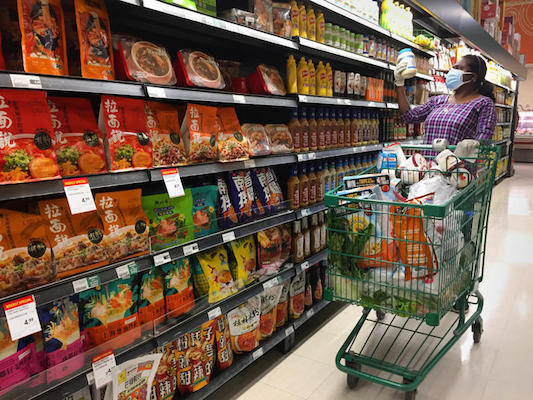
From the Brownstone Institute
By
Is your food making you sick?
Suddenly, the fact that food is making us sick, really sick, has gained a lot of attention.
When Robert F. Kennedy, Jr. announced he would suspend his presidential campaign and campaign for President Trump on August 23, both he and Trump spoke about the need to improve the food supply to regain America’s health.
The same week, Tucker Carlson interviewed the sister-brother team of Casey and Calley Means, coauthors of the #1 New York Times bestseller Good Energy: The Surprising Connection Between Metabolism and Limitless Health. Their thesis, borne out by thousands of medical research studies, is that food can make us very healthy or very sick. The grocery store choices many Americans have made have led us to unprecedented levels of diabetes, obesity, and other metabolic and neurologic diseases that prematurely weaken and age us, our organs, and our arteries.
There is a whole lot wrong with our available food.
- Chemical fertilizers have led to abusing the soil, and consequently, soils became depleted of micronutrients. Unsurprisingly, foods grown in them are now lacking those nutrients.
- Pesticides and herbicides harm humans, as well as bugs and weeds.
- Some experts say we need to take supplements now because we can’t get what we need from our foods anymore.
- Subsidies for wheat, corn, and soybean exceed $5 billion annually in cash plus many other forms of support, exceeding $100 billion since 1995, resulting in vast overproduction and centralization.
- We are practically living on overprocessed junk made of sugar, salt, wheat, and seed oils.
And that is just the start. The problem could have been predicted. Food companies grew bigger and bigger, until they achieved virtual monopolies. In order to compete, they had to use the cheapest ingredients. When the few companies left standing banded together, we got industry capture of the agencies that regulated their businesses, turning regulation on its head.
Consolidation in the Meat Industry
Then the regulators issued rules that advantaged the big guys, and disadvantaged the small guys. But it was the small guys who were producing the highest quality food, in most cases. Most of them had to sell out and find something else to do. It simply became uneconomic to be a farmer.
The farmers and ranchers that were left often became the equivalent of serfs on their own land.
Did you know:
- “Ninety-seven percent of the chicken Americans eat is produced by a farmer under contract with a big chicken company. These chicken farmers are the last independent link in an otherwise completely vertically integrated, company-owned supply chain.”
- “Corporate consolidation is at the root of many of the structural ills of our food system. When corporations have the ability to dictate terms to farmers, farmers lose. Corporations place the burden of financial liability on farmers, dictate details of far.”
- ” Corporations also consolidate ownership of the other steps of the supply chain that farmers depend on — inputs, processing, distribution, and marketing — leaving farmers few options but to deal with an entity against which they have effectively no voice or bargaining power.”
When profitability alone, whether assisted by policy or not, determines which companies succeed and which fail, cutting corners is a necessity for American businesses — unless you have a niche food business, or are able to sell directly to consumers. This simple fact inevitably led to a race to the bottom for quality.
Look at the world’s ten largest food companies. Their sales are enormous, but should we really be consuming their products?

Perhaps the regulators could have avoided the debasement of the food supply. But they didn’t.
And now it has become a truism that Americans have the worst diet in the world.
Could food shortages be looming?
If it seems like the US, blessed with abundant natural resources, could never suffer a food shortage, think again. Did you know that while the US is the world’s largest food exporter, in 2023 the US imported more food than we exported?

Cows are under attack, allegedly because their belching methane contributes to climate change. Holland has said it must get rid of 30-50% of its cows. Ireland and Canada are also preparing to reduce the number of their cows, using the same justification.
In the US, the number of cows being raised has gradually lessened, so that now we have the same number of cows that were being raised in 1951 — but the population has increased by 125% since then. We have more than double the people, but the same number of cows. What!? Much of our beef comes from Brazil.
Pigs and chickens are now mostly raised indoors. Their industries are already consolidated to the max. But cows and other ungulates graze for most of their life, and so the beef industry has been unable to be consolidated in the same way.
But consolidation is happening instead in the slaughterhouses because you cannot process beef without a USDA inspector in a USDA-approved facility — and the number of these facilities has been dropping, as have the number of cows they can handle. Four companies now process over 80% of US beef. And that is how the ranchers are being squeezed.
Meanwhile, efforts are afoot to reduce available farmland for both planting crops and grazing animals. Bill Gates is now the #1 owner of US farmland, much of which lies fallow. Solar farms are covering land that used to grow crops — a practice recently outlawed in Italy. Plans are afoot to impose new restrictions on how land that is under conservation easements can be used.
Brave New Food
That isn’t all. The World Economic Forum, along with many governments and multinational agencies, wants to redesign our food supply. So-called plant-based meats, lab-grown meats, “synbio” products, insect protein, and other totally new foods are to replace much of the real meat people enjoy — potentially leading to even greater consolidation of food production. This would allow “rewilding” of grazing areas, allowing them to return to their natural state and, it is claimed, this would be kinder to the planet. But would it?
Much of the land used for grazing is unsuitable for growing crops or for other purposes. The manure of the animals grazing on it replenishes soil nutrients and contributes to the soil microbiome and plant growth. “Rewilding” may in fact lead to the loss of what topsoil is there and desertification of many grazing areas.
Of course, transitioning the food supply to mostly foods coming from factories is a crazy idea, because how can you make a major change in what people eat and expect it to be good for them? What micronutrients are you missing? What will the new chemicals, or newly designed proteins, or even computer-designed DNA (that will inevitably be present in these novel foods) do to us over time? What will companies be feeding the insects they farm, when food production is governed by ever cheaper inputs?
It gets worse. Real food production, by gardeners and small farmers or homesteaders, is decentralized. It cannot be controlled. Until the last 150 years, almost everyone fed themselves from food they caught, gathered, or grew.
But if food comes mainly from factories, access can be cut off. Supply chains can break down. You can be priced out of buying it. Or it could make you sick, and it might take years or generations before the source of the problem is identified. How long has it taken us to figure out that overprocessed foods are a slow poison?
There are some very big problems brewing in the food realm. Whether we like it or not, powerful forces are moving us into the Great Reset, threatening our diet in new ways, ways that most of us never dreamed of.
Identifying the Problems and Solutions
But we can get on top of what is happening, learn what we need to, and we can resist. That’s why Door to Freedom and Children’s Health Defense have unpacked all of these problems and identified possible solutions.
During a jam-packed two-day online symposium, you will learn about all facets of the attack on food, and how to resist. This is an entirely free event, with a fantastic lineup of speakers and topics. Grab a pad and pencil, because you will definitely want to take notes!
The Attack on Food and Farmers, and How to Fight Back premieres on September 6 and 7. It will remain on our channels for later viewing and sharing as well. By the end of Day 2, you will know what actions to take, both in your own backyard, and in the halls of your legislatures to create a healthier, tastier, safer, and more secure food supply.
See below for a summary and for the complete program.







-

 Agriculture2 days ago
Agriculture2 days agoGlimpse into the Future of Food
-
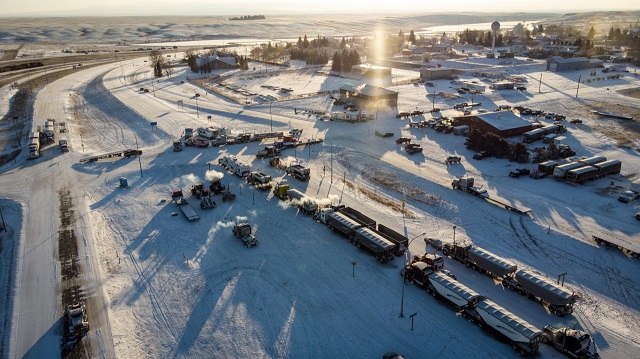
 Alberta2 days ago
Alberta2 days ago‘Coutts Two’ Verdict: Bail and Mischief
-
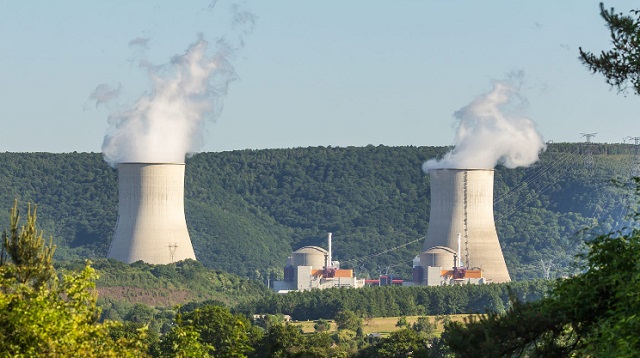
 Energy1 day ago
Energy1 day agoBC should revisit nuclear energy to address BC Hydro shortages
-

 Bruce Dowbiggin2 days ago
Bruce Dowbiggin2 days agoFrom Deal With It: A Cruel, Senseless Fate Ends A Brilliant Career
-

 Health20 hours ago
Health20 hours agoIntegrative Approaches For Cancer
-
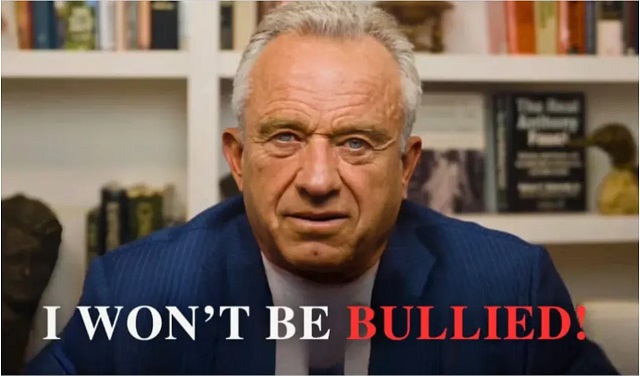
 CBDC Central Bank Digital Currency22 hours ago
CBDC Central Bank Digital Currency22 hours agoRF Kennedy Jr and Political Realignment
-
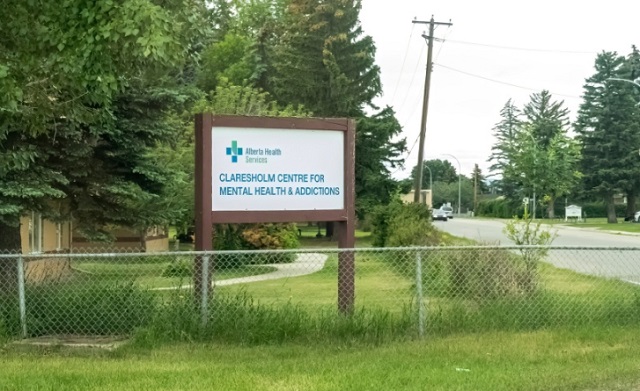
 Addictions22 hours ago
Addictions22 hours agoDrug-related deaths fall in Alberta after province adopts recovery-based program over ‘safe supply’
-
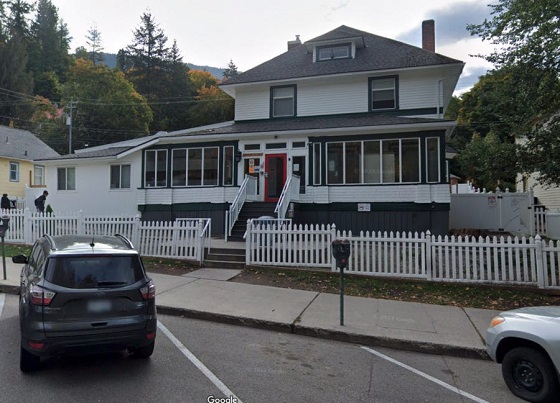
 Addictions15 hours ago
Addictions15 hours agoHarm reduction projects in Nelson are fraying the city’s social fabric, residents say






